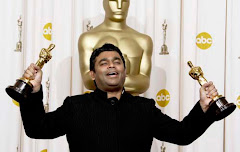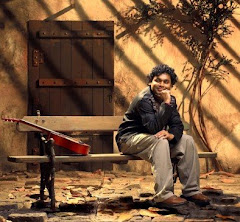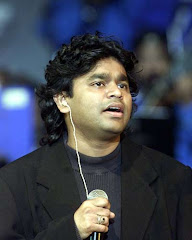
DESARAJU SURYA
Hyderabad: Former Prime Minister P V Narasimha Rao had done a lot of ground work for constructing the Ram temple at Ayodhya but he could not carry his mission forward as he lost power in the 1996 general elections.
For two years, Narasimha Rao – with the help of his close aides – meticulously planned to cobble together an apolitical ‘trust’ to take up the task of Ram temple construction at Ayodhya but political demands ahead of the impending general elections did not let him realize his goal, retired IAS officer and PV’s confidant P V R K Prasad revealed in a Telugu book “Asalu Emi Jarigindante” (What Actually Happened) that was released last week.
Prasad, an IAS officer of 1966 batch, was an additional secretary in the Prime Minister’s Office and Information Adviser to P V Narasimha Rao. He had a long-standing association with Narasimha Rao ever since the latter’s stint as Chief Minister of Andhra Pradesh in 1971.
The former Prime Minister, according to Prasad, felt the Ram temple could be constructed only after the case in the (Supreme) court got resolved or if Hindus and Muslims sat and discussed together and arrived at an amicable decision.
Forming the apolitical Ram Temple Trust – comprising heads of various Hindu mutts and religious bodies from across the country – was one of the hardest political gambles that Narasimha Rao, known as the apara Chanakya, had to play to checkmate the Congress’ biggest political rival Bharatiya Janata Party on the Ayodhya issue.
“They (BJP) say they will build the Ram temple in Ayodhya. Is Lord Rama their own,” PV questioned, even as he was immersed in deep thoughts over the temple issue, Prasad recollects in his book.
To counter the BJP on the temple issue, PV came up with an “amazingly new strategy,” Prasad points out, saying the then Prime Minister wanted the Ram temple constructed through an apolitical trust, excluding the Viswa Hindu Parishad, with full support of the Government of India.
“There is only one solution…. we have to form a totally representative apolitical committee with heads of various Hindu mutts and religious bodies and entrust the temple construction task to it,” Prasad quoted PV as saying.
The main intention behind this was to counter the BJP’s “Ram temple construction agenda” ahead of the polls to four northern states (Himachal Pradesh, Uttar Pradesh, Madhya Pradesh and Rajasthan) and gain political mileage.
“Rama is Hindus’ most revered God. Is he BJP’s own? What’s their campaign? We can compete with the BJP but how can we do so with Rama,” were the questions that bothered PV, Prasad recalls.
“He (PV) knew that the BJP and the VHP would oppose the formation of any trust without their involvement and they would bring pressure on the mutt heads not to join that. Hence he wanted to make it look like the mutt heads themselves were taking the initiative,” Prasad noted.
“PV wanted me to convey to the mutt heads and religious leaders that the government would support them fully and not others (read VHP). The VHP is not a totally representative committee and has been branded as anti-Muslim. It was thus impending constructive efforts to take up the temple construction. Hence the apolitical trust,” Prasad explained.
Besides, P V R K Prasad, former Union Cabinet Secretary Naresh Chandra and an IPS officer Kunal Kishore from Bihar were part of the team that did the work from behind the scenes to bring the Hindu mutt heads together and join the trust. The then Chief Minister of Madhya Pradesh Digvijay Singh too played his part while at one stage they also had to take the help of controversial ‘godman’ Chandraswamy to prevail upon some Ayodhya-based religious leaders to join the trust.
Once the trust took shape and was registered after two years of hectic efforts, PV expressed confidence that the Ram temple would be constructed without any objections and criticism.
But somehow, the first meeting of the trust towards the end of 1995 did not happen “because of some problem,” Prasad says.
By then it was early 1996 and the country was gripped by election fever. “As Prime Minister and All India Congress Committee president, PV became busy drafting political strategies and counter-strategies. One day, I mustered courage and raised the Ayodhya temple issue with him. He told me that any move during the election time will lead to adverse implications,” Prasad says.
“Wait till the elections are over. We shall come back to power and we shall start the temple work then,” Prasad quoted PV as remarking.
“That’s it. Our hard toil and hectic efforts for two years in persuading the Hindu mutt heads and religious leaders…. (went in vain),” Prasad laments.
Hyderabad: Former Prime Minister P V Narasimha Rao had done a lot of ground work for constructing the Ram temple at Ayodhya but he could not carry his mission forward as he lost power in the 1996 general elections.
For two years, Narasimha Rao – with the help of his close aides – meticulously planned to cobble together an apolitical ‘trust’ to take up the task of Ram temple construction at Ayodhya but political demands ahead of the impending general elections did not let him realize his goal, retired IAS officer and PV’s confidant P V R K Prasad revealed in a Telugu book “Asalu Emi Jarigindante” (What Actually Happened) that was released last week.
Prasad, an IAS officer of 1966 batch, was an additional secretary in the Prime Minister’s Office and Information Adviser to P V Narasimha Rao. He had a long-standing association with Narasimha Rao ever since the latter’s stint as Chief Minister of Andhra Pradesh in 1971.
The former Prime Minister, according to Prasad, felt the Ram temple could be constructed only after the case in the (Supreme) court got resolved or if Hindus and Muslims sat and discussed together and arrived at an amicable decision.
Forming the apolitical Ram Temple Trust – comprising heads of various Hindu mutts and religious bodies from across the country – was one of the hardest political gambles that Narasimha Rao, known as the apara Chanakya, had to play to checkmate the Congress’ biggest political rival Bharatiya Janata Party on the Ayodhya issue.
“They (BJP) say they will build the Ram temple in Ayodhya. Is Lord Rama their own,” PV questioned, even as he was immersed in deep thoughts over the temple issue, Prasad recollects in his book.
To counter the BJP on the temple issue, PV came up with an “amazingly new strategy,” Prasad points out, saying the then Prime Minister wanted the Ram temple constructed through an apolitical trust, excluding the Viswa Hindu Parishad, with full support of the Government of India.
“There is only one solution…. we have to form a totally representative apolitical committee with heads of various Hindu mutts and religious bodies and entrust the temple construction task to it,” Prasad quoted PV as saying.
The main intention behind this was to counter the BJP’s “Ram temple construction agenda” ahead of the polls to four northern states (Himachal Pradesh, Uttar Pradesh, Madhya Pradesh and Rajasthan) and gain political mileage.
“Rama is Hindus’ most revered God. Is he BJP’s own? What’s their campaign? We can compete with the BJP but how can we do so with Rama,” were the questions that bothered PV, Prasad recalls.
“He (PV) knew that the BJP and the VHP would oppose the formation of any trust without their involvement and they would bring pressure on the mutt heads not to join that. Hence he wanted to make it look like the mutt heads themselves were taking the initiative,” Prasad noted.
“PV wanted me to convey to the mutt heads and religious leaders that the government would support them fully and not others (read VHP). The VHP is not a totally representative committee and has been branded as anti-Muslim. It was thus impending constructive efforts to take up the temple construction. Hence the apolitical trust,” Prasad explained.
Besides, P V R K Prasad, former Union Cabinet Secretary Naresh Chandra and an IPS officer Kunal Kishore from Bihar were part of the team that did the work from behind the scenes to bring the Hindu mutt heads together and join the trust. The then Chief Minister of Madhya Pradesh Digvijay Singh too played his part while at one stage they also had to take the help of controversial ‘godman’ Chandraswamy to prevail upon some Ayodhya-based religious leaders to join the trust.
Once the trust took shape and was registered after two years of hectic efforts, PV expressed confidence that the Ram temple would be constructed without any objections and criticism.
But somehow, the first meeting of the trust towards the end of 1995 did not happen “because of some problem,” Prasad says.
By then it was early 1996 and the country was gripped by election fever. “As Prime Minister and All India Congress Committee president, PV became busy drafting political strategies and counter-strategies. One day, I mustered courage and raised the Ayodhya temple issue with him. He told me that any move during the election time will lead to adverse implications,” Prasad says.
“Wait till the elections are over. We shall come back to power and we shall start the temple work then,” Prasad quoted PV as remarking.
“That’s it. Our hard toil and hectic efforts for two years in persuading the Hindu mutt heads and religious leaders…. (went in vain),” Prasad laments.





